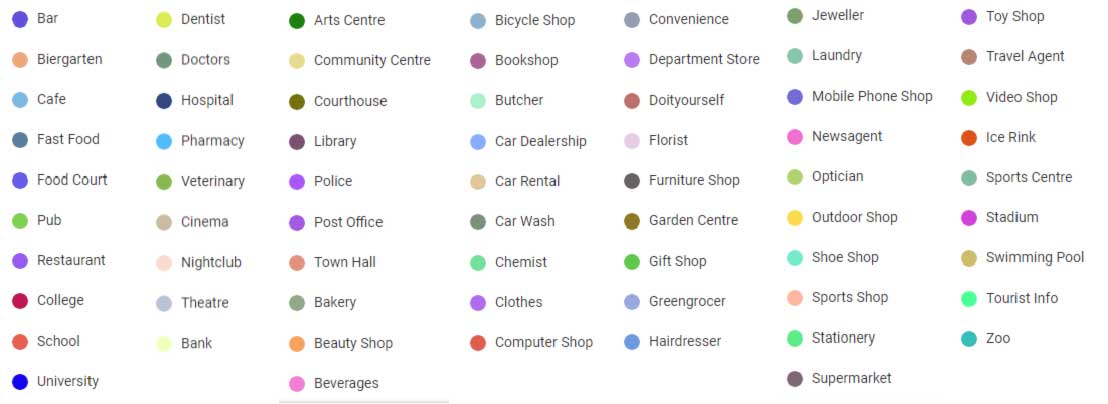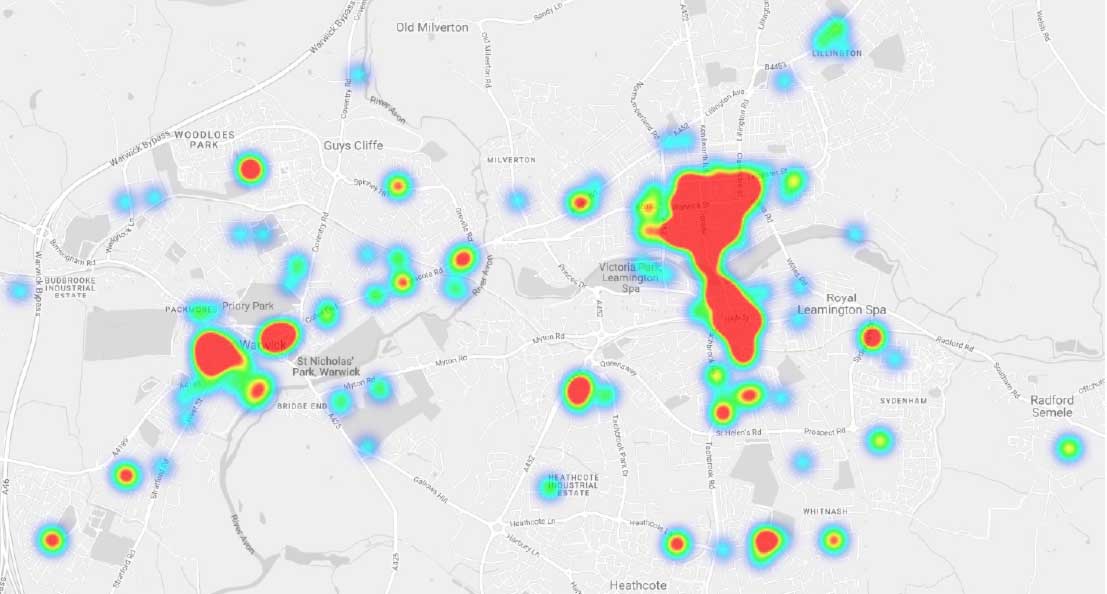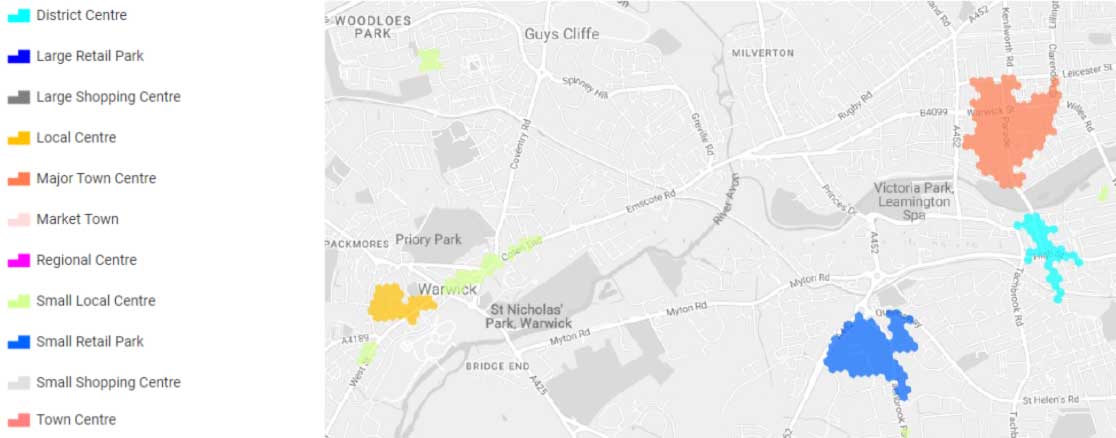S2 NEWSLETTER: 26TH MAY 2022
If your business needs to find areas of “busy-ness”, do you know where to look?
By MIKE NALDER, STRATEGY & INSIGHT DIRECTOR

Retail and hospitality brands rely on being where consumers are. Whether looking for new sites or driving sales from existing outlets, understanding where consumers are coming and going is essential for driving walk-in trade and shopping visits. In many cases, how a pub or coffee shop performs depends more on the amount of consumer footfall in an area than specific site characteristics. After all, having a prime site or corner location on a high street is not much use if other shops nearby are closed or are not the type of outlets consumers need to visit regularly. A local centre or high street needs a variety of open shops to create a ‘hustle & bustle’ and draw customers from the surrounding areas.
In this edition of the S2 Newsletter, we look at this challenge and explore some of the data & tools now available to support location planning.
For retail and hospitality brands, the proximity to footfall drivers has long been recognised as necessary for an outlet to enjoy strong retail sales. What do we mean by footfall drivers? Good examples are schools or transport infrastructures such as train stations or even bus stops. Being located near these destinations is great for coffee shops, takeaways or convenience retail, but not necessarily for outlets that involve a longer dwell time or encourage customers to browse such as restaurants or comparison shops.
Traditionally, retailers have looked to locate their shops close to those of major brands believing they act as big draws for consumers. In days gone by, having a John Lewis or M&S department store in an area made it an attractive retail centre for other lesser-known brands. However, with the growth in online shopping, these once-dominant retailers are no longer the traffic builders they once were, but in large retail parks, particularly those found out of town, the presence of a few well-known brands is still important to persuade consumers to get in their cars and drive there.
For S2’s clients, the current challenge is to identify locations that are convenient for the large numbers of people who are working from home or do not want to travel to large centres. Hence their increased focus on high streets and local centres. Given the increasing cost of fuel and public transport, not to mention sustainability concerns, many consumers may well seek to get what they need from local shops within walking or cycling distance.
What makes a local parade of shops an attractive location for a coffee shop? This is where more granular data about the composition of different centres comes into its own. Location planners need to look beyond the presence of national chains and obvious footfall drivers to rate a centre.
Understanding consumer shopping behaviour is what’s important, so S2’s approach involves looking for destination outlets that provide a specific amenity or public service. It is these essential services that act as traffic builders. Examples include post offices, dispensing chemists and libraries.
However, there are other less obvious places that people visit regularly such as hairdressers, doctors, dentists and vets. These outlet types often represent the main purpose for a trip to a local centre which at the same time may result in the consumer popping into a café, bakery or even the pub!
How often do you see queues outside the post office as people with parcels wait to return things they’ve ordered online, or collect their pension or benefits? How many of these consumers will seek to reward themselves with a coffee or a snack having completed this task?
Retail Draws from OSM Points of Interest Database

Heatmap of Retail Draws to Identify Busy Areas

In MarketView – S2’s Google-enabled mapping and data visualisation system – users can locate a wide variety of outlet types from the Points of Interest (PoI) database. This rich data source of over 500,000 locations in the UK is provided by OpenStreetMap – a collaborative project involving over 8 million users globally to create a free editable geographic database of the world. The PoI relevant for UK retailers include the locations of 12,000 health and 4,000 education outlets as well as 87,000 different shopping locations covering everything from bakeries to travel agents. These are included in the full list below of Retail Draws that S2 use for site location evaluation projects:
As well as the presence and proportion of specific outlet types in an area, MarketView also includes a summary level classification of 6,500 different retail centres across the UK. This provides a quick and easy way for retail brands to segment their stores. Often it is simply the size of a retail centre that will affect its popularity with consumers, and the Retail Centres data layer in MarketView includes a count of retail outlets in each centre, and enables mapping of the geographical area each centre covers, as illustrated below:
Local Centres & Retail Areas in Warwick & Leamington

Despite the return to some sort of normality following the pandemic, retail businesses remain under threat from online channels. Retailers need to understand this so they can avoid areas in decline that have growing numbers of empty premises, or those dominated by the types of stores that are increasingly being replaced by online alternatives.
With this is mind, MarketView provides several derived measures for each centre. These include online exposure, vulnerability and e-resilience. The vulnerability of a centre reflects the mix of shop types that in volume terms are either currently growing (e.g.nail salons, takeaways and convenience stores) or declining (e.g. bookmakers, estate agents and mobile phone shops). Also available is a measure of how diverse a local centre is based on the presence of national chains – to indicate the extent to which a centre is ‘clone’ of lots of other retail areas in the UK.
In recent years, other datasets have become available to provide other ways of estimating footfall. After all, isn’t it the presence of consumers in an area rather than other shops that’s important?
There are many ways of monitoring consumer activity to identify retail areas with high footfall. Currently using geolocation data sourced from mobile phone databases is very much in vogue as it shows where consumers congregate at different times on any given day. However, this big data source is expensive and hard to process to create meaningful or actionable insights for location planning purposes.
To be of value, mobile data needs to be recent and up to date and screened for occasional events that may cause unusually high levels of footfall. For example, a Christmas market, street party, mini-festival or other one-off public gathering could bring lots of people to a retail centre for reasons other than shopping or leisure. The opposite is also true. Recent lockdowns and subsequent shop closures due to the pandemic will have reduced the number of mobile phone carrying consumers in an area. Unless screened for outliers, mobile data can over or under-estimate consumer footfall as a measure of demand for retail or hospitality.
While mobile data can be great for describing the number and type of consumer who in an area at any given time – which is good for planning promotions – it doesn’t really explain why those people are there in the first place. Ultimately, understanding the reasons consumers visit a centre determines how likely they are to be a prospective customer, and knowing the outlet types there helps to narrow this down.
For example, knowing that there is a chemist and a post office in a centre means there is more chance of a consumer popping into your coffee shop, than if there is a beauty salon or hairdressers where consumers can get refreshments on the premises.
Over the last 20 years, Serendipity2 has worked with a variety of businesses both big and small who rely on footfall. Please get in touch if you would like to find out more about our software, data or location planning services.
GOT AN ACTIVE PROJECT REQUIREMENT?
Get in touch today with our team today to take your brand’s success rate to the next level.
